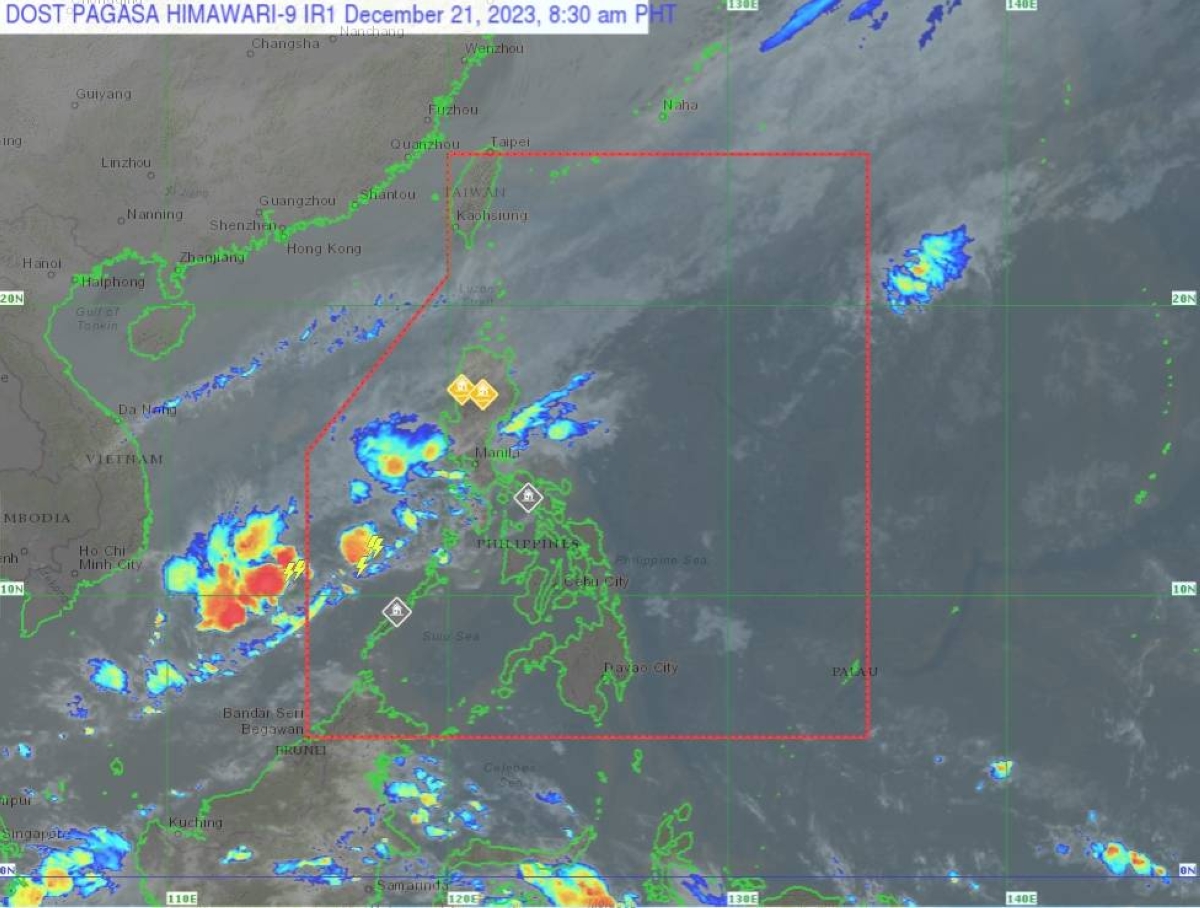MANILA, Philippines: The Philippine Atmospheric Geophysical and Astronomical Service Administration (Pagasa) has reported that the country will experience the influence of at least five weather systems over the next 24 hours. These weather systems include a low pressure area (LPA) located outside the Philippine Area of Responsibility (PAR).
Despite being outside PAR, the LPA, formerly known as Tropical Depression “Kabayan,” continues to bring rainfall to certain areas, particularly the Kalayaan Islands. The LPA’s trough and shear line, where hot and cold air converge, are affecting Cagayan, Isabela, Aurora, and Quezon. Residents in these areas can expect overcast skies with scattered rain showers and thunderstorms.
In addition to the LPA, the northeast monsoon or “amihan” is also influencing the weather in the country. The amihan refers to cold winds from the northeast that bring rainfall, especially to the eastern side of the Philippines. Currently, the Cordillera Administrative Region, the rest of Cagayan Valley, Ilocos Sur, and Ilocos Norte are experiencing overcast skies with rain due to the amihan.
For Metro Manila and the rest of the country, Pagasa forecasts partly cloudy to overcast skies with isolated downpours and thunderstorms. These weather conditions are caused by the easterlies and localized thunderstorms.
It is important for residents and visitors to stay informed about the weather updates from Pagasa. By being aware of the current weather systems affecting the country, individuals can take necessary precautions and plan their activities accordingly. It is advisable to carry an umbrella or raincoat and be prepared for sudden changes in weather conditions.
In light of these weather systems, it is crucial to prioritize safety. If traveling, it is recommended to check for any advisories or warnings from Pagasa or local authorities. It is also advisable to avoid crossing rivers or areas prone to flooding. In case of heavy rain or thunderstorms, it is best to stay indoors and avoid unnecessary outdoor activities.
Understanding the impact of these weather systems requires familiarity with local laws and customs. The Philippine Area of Responsibility (PAR) refers to the designated area where Pagasa has the authority to monitor and issue weather bulletins and warnings. However, weather systems outside PAR can still affect the country, as seen in the case of the LPA. This highlights the importance of staying updated on weather conditions, regardless of whether an area falls within or outside PAR.
The northeast monsoon, known as “amihan,” plays a significant role in the Philippines’ weather patterns. It brings cold winds from the northeast, which often result in rainfall, particularly on the eastern side of the country. The amihan is an important weather phenomenon that influences various regions in the Philippines, including the Cordillera Administrative Region, Cagayan Valley, Ilocos Sur, and Ilocos Norte.
Pagasa’s forecast of partly cloudy to overcast skies with isolated downpours and thunderstorms for Metro Manila and the rest of the country highlights the unpredictability of localized weather conditions. The easterlies, which refer to winds blowing from the east, contribute to these weather patterns. These localized thunderstorms can occur suddenly and may bring heavy rain and thunderstorms to specific areas.
In conclusion, the Philippines is currently experiencing the influence of multiple weather systems, including a low pressure area outside PAR and the northeast monsoon. Pagasa advises residents and visitors to stay updated on weather bulletins and warnings. Precautions should be taken, such as carrying umbrellas or raincoats and staying indoors during heavy rain or thunderstorms. By understanding the local weather patterns and staying informed, individuals can ensure their safety and make informed decisions regarding their activities.
Source: The Manila Times








